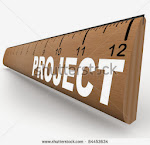The Indian Constitution
Need of Constitution
Most countries in the world have a Constitution. The Constitution serves several purposes. First, it lays out certain ideals that form the basis of the kind of country that we as citizens aspire to live in. A Constitution tells us what the fundamental nature of our society is. A country is usually made up of different communities of people who share certain beliefs but may not necessarily agree on all issues. A Constitution helps serve as a set of rules and principles that all persons in a country can agree upon as the basis of the way in which they want the country to be governed. This includes not only the type of government but also an agreement on certain ideals that they all believe the country should uphold.
The second important purpose of a Constitution is to define the nature of a country’s political system. For example, Nepal’s earlier Constitution stated that the country was to be ruled by the King and his council of ministers. In countries that have adopted a democratic form of government or polity, the Constitution plays a crucial role in laying out certain important guidelines that govern decision-making within these societies.
The Indian Constitution: Key Features
The long experience of authoritarian rule under the colonial state convinced Indians that free India should be a democracy in which everyone should be treated equally and be allowed to participate in government.
Below are the key features of the Indian Constitution.
1. Federalism: This refers to the existence of more than one level of government in the country. In India, we have governments at the state level and at the centre. Panchayati Raj is the third tier of government. While each state in India enjoys autonomy in exercising powers on certain issues, subjects of national concern require that all of these states follow the laws of the central government. Under federalism, the states are not merely agents of the federal government but draw their authority from the Constitution as well. All persons in India are governed by laws and policies made by each of these levels of government.
2. Parliamentary Form of Government: The different tiers of government consist of representatives who are elected by the people. Constitution of India guarantees universal adult suffrage for all citizens. The people of India have a direct role in electing their representatives. Also, every citizen of the country, irrespective of his/her social background, can also contest in elections.
3. Separation of Powers: According to the Constitution, there are three organs of the State. These are the legislature, the executive and the judiciary. The legislature refers to our elected representatives. The executive is a smaller group of people who are responsible for implementing laws and running the government. The judiciary, refers to the system of courts in this country. In order to prevent the misuse of power by any one branch of the State, the Constitution says that each of these organs should exercise different powers. Through this, each organ acts as a check on the other organs of the State and this ensures the balance of power between all three.
4. Fundamental Rights: The section on Fundamental Rights has often been referred to as the ‘conscience’ of the Indian Constitution. Fundamental Rights, protect citizens against the arbitrary and absolute exercise of power by the State. The Constitution, thus, guarantees the rights of individuals against the State as well as against other individuals. The Constitution, also guarantees the rights of minorities against the majority.
In addition to Fundamental Rights, the Constitution also has a section called Directive Principles of State Policy. This section was designed by the members of the Constituent Assembly to ensure greater social and economic reform, and to serve as a guide to the independent Indian State to institute laws and policies that help reduce the poverty of the masses.
The Fundamental Rights in the Indian Constitution include:
1. Right to Equality: All persons are equal before the law. This means that all persons shall be equally protected by the laws of the country. It also states that no citizen can be discriminated against on the basis of their religion, caste or sex. Every person has access to all public places including playgrounds, hotels, shops etc. The State cannot discriminate against anyone in matters of employment. But there are exceptions to this that you will read about later in this book. The practice of untouchability has also been abolished.
2. Right to Freedom: This includes the right to freedom of speech and expression, the right to form associations, the right to move freely and reside in any part of the country, and the right to practise any profession, occupation or business.
3. Right against Exploitation: The Constitution prohibits trafficking, forced labour, and children working under 14 years of age.
4. Right to Freedom of Religion: Religious freedom is provided to all citizens. Every person has the right to practise, profess and propagate the religion of their choice.
5. Cultural and Educational Rights: The Constitution states that all minorities, religious or linguistic, can set up their own educational institutions in order to preserve and develop their own culture.
6. Right to Constitutional Remedies: This allows citizens to move the court if they believe that any of their Fundamental Rights have been violated by the State.
7. Secularism: A secular state is one in which the state does not officially promote any one religion as the state religion.
The Constitution plays a crucial role in laying out the ideals that we would like all citizens of the country to adhere to, including the representatives that we elect to rule usa




